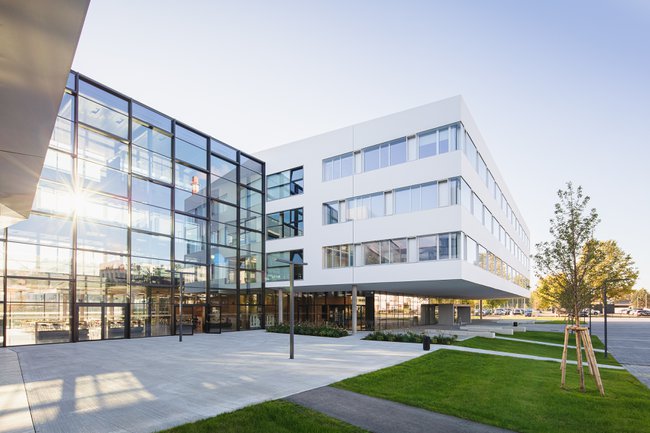Facilitating Visual Data Analysis
St. Pölten UAS Researchers Develop Learning and Operating Aids for Visual Analytics Tools

Together with the companies Landsiedl Popper OG and datavisyn GmbH, the JOANNEUM University of Applied Sciences, and TU Wien, researchers of the St. Pölten UAS have developed learning and operating aids for Visual Analytics tools – specifically for use by biomedical experts and data journalists. Through the integration of newly developed onboarding methods, the VA tools helps users to better understand data visualisations.
Visual Analytics
The effective communication of data and insights is of vital importance in today’s data-driven world. At the same time, however, the rapid growth of data volumes tends to exceed our ability to effectively analyse and use them. Visual Analytics (VA) has established itself as an interdisciplinary field that combines human visual perception with methods of automated data analysis. The research project SEVA, which was recently completed, took on this challenge and examined the application areas of data journalism and biomedical research & development.
“Despite humans’ visual nature and their strength in interpreting visual impressions, our ability to understand visual representations of data is limited. For example, experts such as journalists and biomedical researchers frequently lack specialist knowledge of Visual Analytics, although they are highly competent in their own respective fields. This can lead to incorrect data interpretations, a restricted use of data analysis tools, and potential frustration or the rejection of these high-performance methods,” explains Wolfgang Aigner, project lead, UAS professor, and researcher at the Institute of Creative\Media/Technologies.
Tools for Biomedical Experts and Data Journalists
One of the greatest challenges for biomedical experts and data journalists is the fast applicability of visual data tools. In order to facilitate visual data analysis, the researchers developed new Visual Analytics tools specifically for these two target groups. The novelty was that half-automatically generated onboarding methods were integrated into these VA tools that actively support users in interpreting the visualisations.
“It is well known that users are often hesitant when it comes to seeking support in help systems or onboarding systems. Well-designed onboarding systems that are integrated into visualisations and thus do not interfere with the workflow can contribute to overcoming these reservations,” emphasises Margit Pohl, project partner at TU Wien.
Understanding Data Visualisations through Onboarding Methods
The newly developed onboarding methods help biomedical experts and data journalists to understand data visualisations and automated analysis algorithms. Within the project, the researchers therefore developed a number of design measures for the creation of effective onboarding methods. These include design considerations, interaction concepts, and the formulation of onboarding instructions.
In addition, the project team members created training materials for data journalism in order to enhance users’ competencies in dealing with data and statistics.
“As a media company with a background in mathematics, the SEVA project provided an opportunity for us to study and practically experiment with various methods for the onboarding of data journalists. The insights we gained are directly integrated into our daily work and allow us to use the latest technologies such as generative AI and large language models in order to further reduce the obstacles associated with complex data analysis and visualisation,” Michael Landsiedl, project partner from Landsiedl Popper OG, is pleased to report.
Prototype Developed
For the half-automated development of onboarding methods, it was necessary to implement a JavaScript library. To this end, the researchers designed “VisAhoi”, a JavaScript library that they were able to integrate into VA tools.
“We at datavisyn operate in an extremely complex environment, which is why the applications we develop are accordingly comprehensive. The research project SEVA allowed us to explore – together with top-class partners – how we can further improve the onboarding of our users. This is a decisive success factor for us,” says Dominic Girardi, project partner from datavisyn.
About the Project
The SEVA project was carried out by the St. Pölten UAS’ Institute of Creative\Media/Technologies in cooperation with Landsiedl Popper OG, datavisyn GmbH, the JOANNEUM University of Applied Sciences, and the Institute of Visual Computing & Human-Centered Technology at TU Wien. SEVA was financed by the Austrian Research Promotion Agency (FFG) within the framework of the 7th call of the programme “ICT of the Future”.
- Read more about the project on our research website.
- A demo of VisAhoi.
